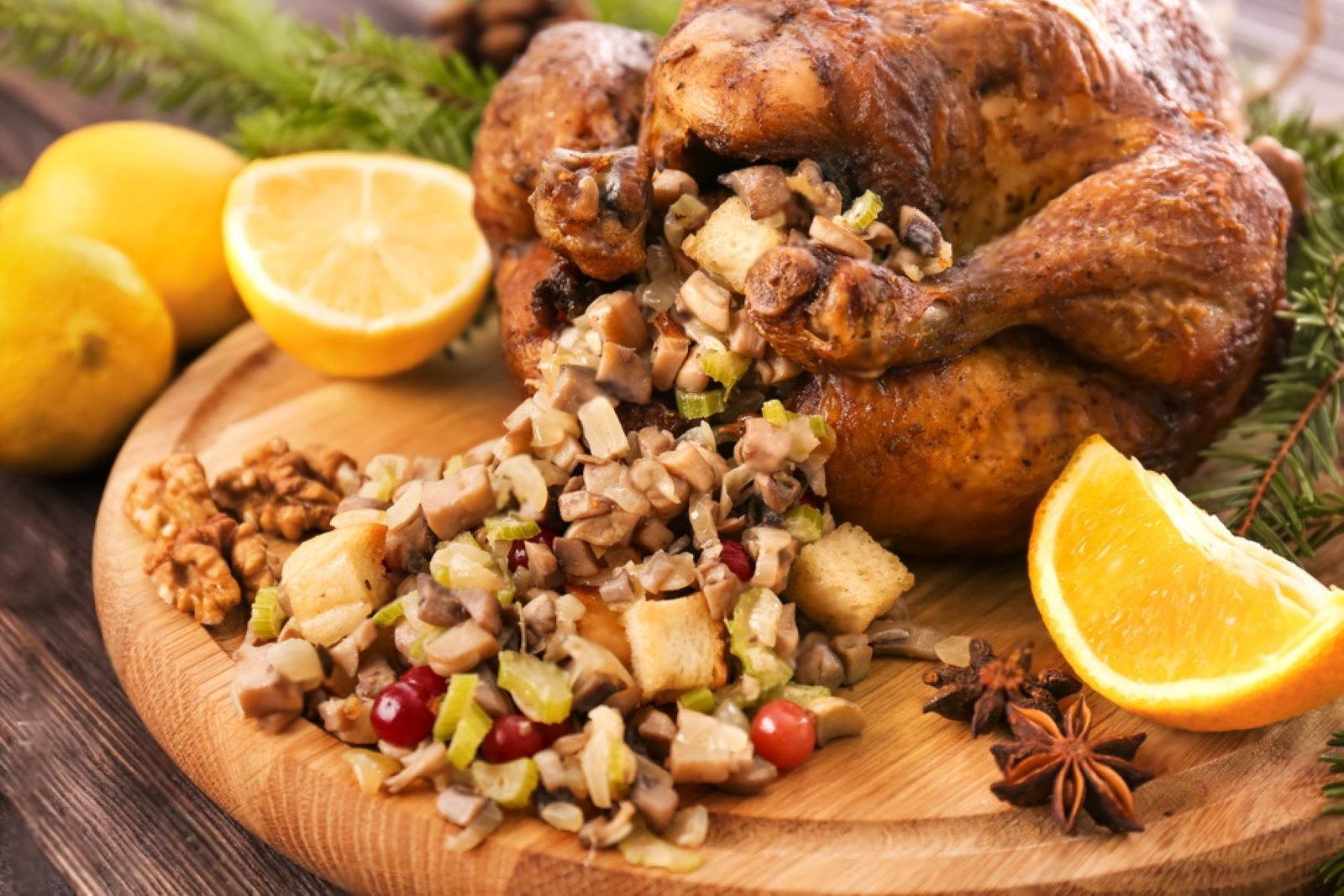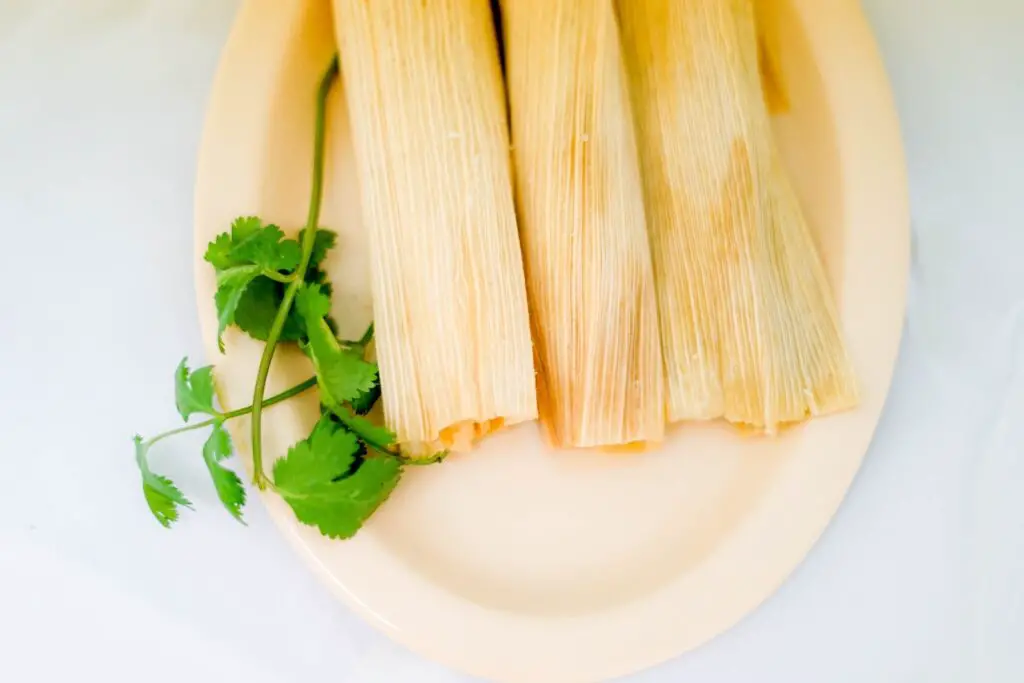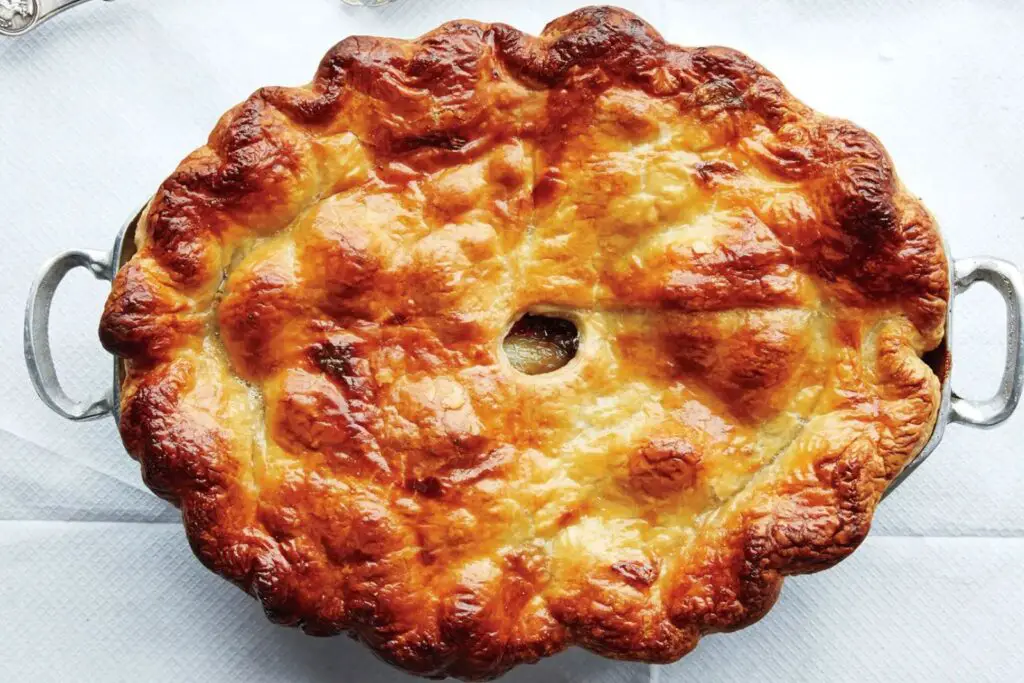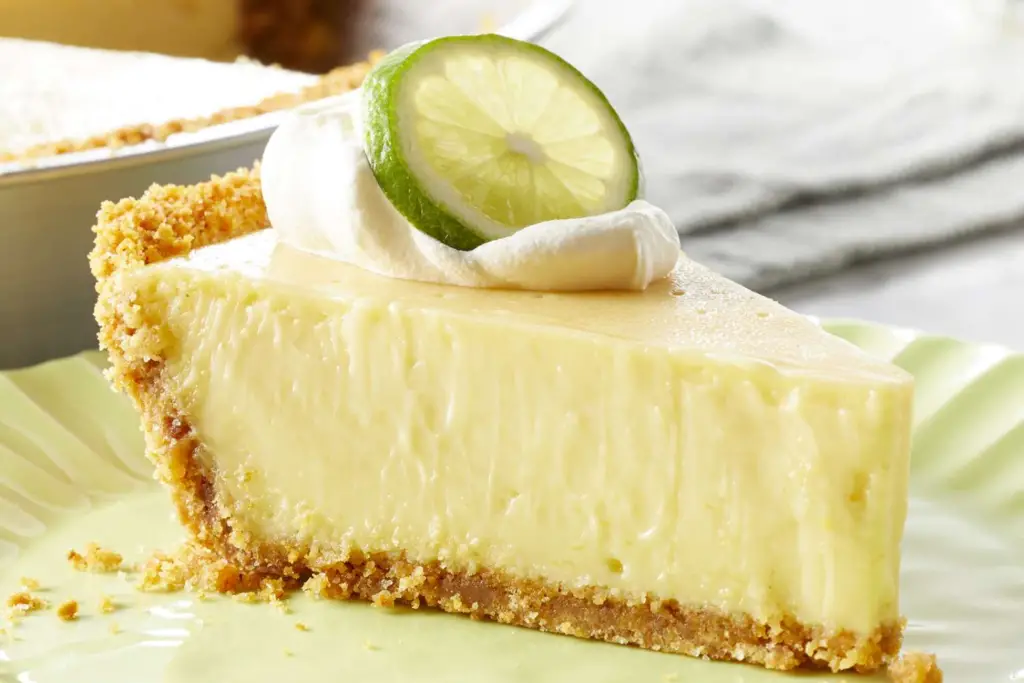
Turkey stuffing, a beloved staple of holiday feasts and celebratory meals, brings a symphony of flavors and textures to the table. Also known as dressing, this aromatic blend of bread, herbs, vegetables, and seasonings is a culinary masterpiece that complements roasted turkeys and adds a touch of tradition to every plate. Whether cooked inside the turkey cavity or baked separately as a dressing, this dish carries the essence of the season and a sense of home in every mouthful. However, when preparing a large batch of turkey stuffing or when making it from scratch, it may be challenging to consume it all before it loses its freshness or taste.
Freezing turkey stuffing becomes a practical and efficient approach to preserving its delightful flavors and wholesome charm, ensuring that each forkful captures the essence of a homemade feast, ready to elevate your meals with the essence of perfectly frozen turkey stuffing, even when freshly made stuffing isn’t readily available or when you yearn for the comforting flavors of the season at your convenience. In this guide, we will delve into the best practices for freezing turkey stuffing, allowing you to savor the richness of this festive dish and elevate your culinary creations with the essence of perfectly frozen turkey stuffing, without the need for continuous preparations or extensive cooking efforts.
Here are the simple steps to freeze turkey stuffing:
Step 1: Prepare your Turkey Stuffing
Preparing your turkey stuffing properly is a fundamental step before embarking on the freezing process. This initial phase is crucial to ensure that your stuffing maintains its taste, texture, and overall quality during freezing and subsequent reheating. The preparation process involves ensuring that your stuffing is fully cooked and seasoned to perfection, regardless of the specific ingredients you’ve chosen for your recipe.
To begin, take the time to fully cook your turkey stuffing according to your chosen recipe. Whether you’ve opted for a classic bread-based stuffing enriched with aromatic herbs, sautéed vegetables, or even a blend of dried fruits, it’s important that all the components are properly cooked. This not only contributes to the flavor profile but also assists in preserving the stuffing’s integrity during freezing.
Equally essential is ensuring that your stuffing is seasoned to perfection. Seasoning adds layers of flavor to your dish, enhancing its taste and overall appeal. Be it a balance of salt, pepper, herbs, and spices or more unconventional flavorings, take care to adjust the seasoning to your personal preferences. This seasoning will not only influence the immediate taste but will also contribute to the overall enjoyment of the dish after it has been frozen and reheated.
Remember that the success of freezing turkey stuffing starts with its initial preparation. Ensuring that your stuffing is fully cooked and seasoned optimally sets the stage for a dish that will remain delicious and satisfying even after being frozen and thawed. Once you’ve mastered this first step, you’re well on your way to creating a frozen turkey stuffing that promises a delightful culinary experience whenever you decide to indulge.
Step 2: Cool down the Stuffing
After preparing your delectable turkey stuffing, the next critical step in the freezing process is allowing it to cool down to room temperature. This seemingly simple step plays a pivotal role in maintaining the quality of your stuffing throughout its time in the freezer. Cooling down the stuffing before freezing serves as a safeguard against the formation of condensation, a factor that could potentially lead to the development of freezer burn and compromise the overall taste and texture of the dish.
When your stuffing is hot, it naturally releases steam due to the residual heat. If you were to package and seal the stuffing while it’s still warm, the steam would condense when it comes into contact with the cooler interior of the storage container. This condensation could subsequently freeze, forming ice crystals on the surface of the stuffing. These ice crystals, commonly referred to as freezer burn, have the potential to alter the taste, texture, and visual appeal of the dish.
By allowing the cooked turkey stuffing to cool down to room temperature before freezing, you minimize the risk of condensation forming inside the storage container. This practice helps preserve the original integrity of the stuffing, ensuring that it retains its flavors and textures when you decide to enjoy it in the future.
To cool down the stuffing effectively, place it in a wide, shallow container. This encourages faster cooling by maximizing the surface area exposed to air. Avoid covering the stuffing immediately, as this can trap heat and slow down the cooling process. Once the stuffing has cooled to room temperature, proceed with portioning and packaging it for freezing.
In essence, cooling down your cooked turkey stuffing is a preventive measure that maintains the quality of your dish by thwarting the development of freezer burn. Taking the time to let the stuffing reach room temperature before freezing is a small yet impactful step that ensures your future culinary endeavors are met with delicious, well-preserved results.
Step 3: Portion into Servings
As you prepare your delicious turkey stuffing for freezing, the step of portioning it into individual serving-sized portions holds significance in terms of both convenience and practicality. By dividing your stuffing into manageable portions, you are setting the stage for a smoother and more efficient defrosting process while also curbing unnecessary food wastage.
Creating individual serving-sized portions allows you to defrost only the exact amount of stuffing you need for a particular meal. This is particularly beneficial when you’re cooking for yourself or a small group, as it eliminates the need to defrost an entire batch of stuffing when you only require a fraction of it. Consequently, this practice not only saves time but also contributes to the reduction of food waste.
When stuffing is frozen in bulk without proper portioning, the process of thawing and reheating becomes less precise. You might find yourself having to thaw a larger quantity of stuffing than you need, which could lead to leftovers that may go to waste. On the other hand, portioning the stuffing before freezing allows you to maintain the quality of the remaining portions by keeping them sealed and frozen until they’re ready to be used.
To implement this step effectively, consider the typical serving size that you and your family or guests prefer. Using a kitchen scale or visually estimating the desired portion size, divide the cooled stuffing into separate portions. You can use small containers, silicone muffin cups, or even sealable plastic bags for portioning, depending on your preferred storage method.
Ultimately, portioning your turkey stuffing before freezing aligns with the principles of practicality and minimizing waste. By having individual servings readily available, you’re able to enjoy your stuffing without the concerns of defrosting excess portions that might go unused. This thoughtful approach contributes to an overall more efficient and sustainable freezing process, ensuring that your culinary creations are enjoyed to the fullest without unnecessary wastage.
Step 4: Package the Stuffing
After you’ve portioned your delectable turkey stuffing into individual servings, the next crucial step in the freezing process is carefully packaging each portion. Proper packaging not only protects the stuffing from freezer burn but also helps maintain its taste and texture, ensuring that the dish remains as appetizing when it’s thawed and reheated as it was when it was freshly made.
To achieve this, wrap each portion of turkey stuffing tightly in either plastic wrap or aluminum foil. The primary goal here is to create an airtight seal around the stuffing, which acts as a barrier against moisture and air. Moisture and air are the primary culprits behind freezer burn – the process through which the quality of frozen food deteriorates due to the formation of ice crystals and subsequent dehydration.
When using plastic wrap, ensure that you cover the portion completely, smoothing out any air pockets to eliminate potential points of contact with air. For aluminum foil, wrap the portion snugly, making sure there are no gaps that could allow air or moisture to infiltrate.
Creating an airtight seal is crucial because it prevents moisture from forming on the surface of the stuffing when it’s frozen. This layer of moisture can eventually freeze and lead to the dreaded freezer burn. Freezer burn not only affects the texture of the stuffing, making it dry and unappetizing, but it can also impact its flavor by allowing it to absorb off-flavors from the freezer.
Additionally, using plastic wrap or aluminum foil as packaging materials provides an extra layer of insulation, helping to maintain the stuffing’s original flavors and textures. This is particularly important if you plan to store the stuffing for an extended period before consumption.
Proper packaging of your portioned turkey stuffing is a safeguard against freezer burn and a key contributor to preserving its quality. By taking the time to wrap each portion tightly and airtight, you’re ensuring that your future meals will be just as delicious and satisfying as the day the stuffing was prepared.
Step 5: Place in a Freezer-Safe Container
With your individual portions of turkey stuffing securely wrapped in plastic wrap or aluminum foil, the next essential step is to transfer them into a suitable freezer-safe container. This step serves to enhance the protection of your stuffing against potential freezer burn, maintain its quality, and promote efficient organization within your freezer.
A freezer-safe container can be a rigid plastic container, a glass dish with a tight-fitting lid, or even a resealable freezer bag designed for long-term storage. The primary criterion is that the container should be designed to withstand the cold temperatures of the freezer without becoming brittle or cracking.
When placing the wrapped portions into the container, it’s important to arrange them in a way that minimizes empty space. This not only helps optimize the available freezer space but also reduces the potential for air circulation, which can lead to temperature fluctuations within the container.
Furthermore, when using a resealable freezer bag, it’s important to expel as much air as possible before sealing. Air pockets within the bag can contribute to the development of freezer burn, which can compromise the taste and texture of the stuffing over time. You can achieve this by gently pressing on the bag to force out excess air before sealing it securely.
The purpose of using a container or bag at this stage is to create an additional layer of protection against freezer burn and to help maintain the optimal condition of your turkey stuffing. The combination of airtight wrapping and a suitable container ensures that the stuffing remains as close to its freshly made state as possible when it’s eventually thawed and reheated.
Transferring your wrapped portions of turkey stuffing into a freezer-safe container is a pivotal step in preserving the quality of your dish. By following this practice and minimizing air exposure, you’re safeguarding your culinary efforts against potential freezer burn and ensuring that your future meals are just as enjoyable as if they were made fresh.
Step 6: Label and Date
As you prepare your portions of turkey stuffing for freezing, taking a moment to label each container or bag is a simple yet important step that contributes to efficient meal planning and the overall quality of your frozen dish. Clear labeling provides valuable information that helps you keep track of storage times and ensures that you consume the stuffing within a suitable time frame for the best flavor and texture.
When labeling, make sure to include the following details:
- Contents: Clearly indicate that the container or bag contains turkey stuffing. This prevents confusion in your freezer and helps you quickly identify what’s inside without having to open each package.
- Date of freezing: Write down the date when you’re placing the stuffing in the freezer. This date serves as a reference point, allowing you to calculate the storage duration accurately.
By including these details, you’re creating a record that ensures you’re aware of how long the turkey stuffing has been stored. This information is vital because frozen foods, while safe to eat indefinitely if stored properly, can start to experience changes in taste, texture, and nutritional value over time. Generally, it’s recommended to consume frozen dishes within three to six months to enjoy them at their best.
Properly labeled packages also make it easier to plan meals. You can quickly assess what you have available in your freezer and make informed decisions about when to use the frozen stuffing based on its storage duration.
Moreover, labeling your containers or bags is especially helpful if you have multiple batches of stuffing or a variety of frozen dishes in your freezer. It streamlines the process of selecting what you want to thaw and ensures that you don’t accidentally overlook items that might be nearing the end of their recommended storage period.
Labeling and dating your containers or bags of turkey stuffing may seem like a small step, but it greatly contributes to effective freezer organization, optimal consumption of your culinary creations, and the overall satisfaction of your meals.
Step 7: Freeze the Stuffing
After carefully packaging and labeling your portions of turkey stuffing, the next critical phase is to freeze them properly. This step is pivotal in preserving the quality, taste, and texture of your stuffing for an extended period. To ensure optimal freezing and minimize the risk of freezer burn, it’s important to consider factors such as container placement and efficient air circulation.
Place the labeled containers or bags of turkey stuffing in the freezer, ensuring that you arrange them strategically. To promote effective freezing, it’s advisable to leave some space around each container or bag. This space allows for proper air circulation, which is essential for the even distribution of cold air and efficient freezing.
When arranging the containers or bags, avoid overcrowding the freezer shelves. Overcrowding can impede proper air circulation and lead to uneven freezing. If possible, space out the portions to allow for sufficient gaps between them.
Additionally, take note of the type of freezer you have. If you’re using a chest freezer, you have more flexibility in terms of organization and placement. However, if you’re using a standard upright freezer with shelves, it’s a good idea to position the containers or bags closer to the sides or back of the freezer. These areas tend to have better air circulation and more stable temperatures.
Another consideration is the temperature at which you set your freezer. Make sure your freezer is operating at the recommended temperature for optimal freezing, typically around 0°F (-18°C) or lower. Maintaining the correct temperature ensures that your turkey stuffing freezes quickly and thoroughly, reducing the likelihood of freezer burn and maintaining its overall quality.
By placing the labeled containers or bags of turkey stuffing in the freezer with attention to spacing and air circulation, you’re taking steps to ensure that your culinary creations freeze uniformly and maintain their taste and texture. This level of care during the freezing process contributes to the long-term enjoyment of your frozen stuffing when you eventually decide to savor it.
How long can turkey stuffing last in the freezer?
Turkey stuffing can last in the freezer for about 1-3 months while maintaining quality. After this period, it is safe to eat but might experience texture and flavor changes. Proper packaging and storage at 0°F (-18°C) or lower can extend its freezer life.
Step 8: Thaw and Reheat
The moment has arrived when you’re ready to indulge in your frozen turkey stuffing. Properly defrosting and reheating the stuffing ensures that its flavors, textures, and overall quality are retained, giving you a delightful culinary experience that’s reminiscent of the day it was freshly prepared.
To begin, remove the desired portion or portions of turkey stuffing from the freezer. The recommended method for defrosting frozen stuffing is to place it in the refrigerator. Allow the stuffing to thaw gradually and evenly by placing it on a plate or in a shallow container to catch any moisture that may accumulate as it thaws.
Thawing the stuffing in the refrigerator overnight is a gentle process that minimizes the risk of bacterial growth and helps preserve its quality. It’s important to note that defrosting at room temperature or using quick thawing methods like the microwave can lead to uneven thawing and potential loss of texture and flavor.
Once the stuffing is fully thawed, you can proceed to reheating. There are a couple of effective methods for reheating your turkey stuffing:
- Oven: Preheat your oven to a moderate temperature, around 350°F (175°C). Place the thawed stuffing in an oven-safe dish and cover it with aluminum foil to prevent drying. Reheat for about 20-25 minutes or until the stuffing reaches an internal temperature of 165°F (74°C). This method helps restore the crispy top layer and maintains the even distribution of heat.
- Microwave: If you’re looking for a quicker option, you can use the microwave. Transfer a portion of the thawed stuffing to a microwave-safe dish. Cover the dish with a microwave-safe lid or microwave-safe plastic wrap, leaving a small vent for steam to escape. Reheat in short intervals, around 1-2 minutes each, until the stuffing reaches the desired temperature. Be cautious not to overheat and dry out the stuffing.
By defrosting and reheating your frozen turkey stuffing with care, you’re ensuring that the flavors and textures you loved when it was freshly made are preserved. This final step transforms your frozen creation into a delicious and satisfying dish that can be enjoyed any time you’re in the mood for a taste of comfort and nostalgia.
Other related questions
Can you refreeze turkey stuffing?
Refreezing turkey stuffing is not recommended, as it can lead to quality deterioration and potential food safety concerns. Once thawed, microbial growth can occur. Consume within a reasonable time after initial thawing to ensure taste and safety.
How do I know if the turkey stuffing has gone bad after being frozen?
Signs of frozen turkey stuffing going bad include odors, changes in texture (mushiness or dryness), and a sour or rancid taste. Freezer burn, visible ice crystals, or unusual discoloration are indicators. Trust your senses and discard if in doubt to avoid potential foodborne illness.
Can I freeze stuffing with added vegetables and herbs?
Yes, you can freeze stuffing with added vegetables and herbs, but consider blanching vegetables before adding to preserve texture. Herbs might lose some vibrancy but can still be used. Cool the stuffing before freezing, use airtight packaging, and note that textures may change slightly after thawing.
Are there any ingredients I should avoid using in turkey stuffing before freezing?
When freezing turkey stuffing, avoid using ingredients with high water content, such as fresh vegetables like cucumbers or lettuce, as they can lead to a soggy texture. Refrain from incorporating delicate ingredients like soft cheeses, as they might alter consistency during freezing. Also, minimize the use of highly perishable items to maintain the stuffing’s quality after thawing.
Is it possible to freeze stuffing with added meats or sausages?
Yes, it’s possible to freeze stuffing with added meats or sausages. Cook and cool the meat before incorporating it into the stuffing. Ensure the stuffing reaches a safe internal temperature before freezing, and use airtight packaging. Note that reheating might affect meat texture slightly.








